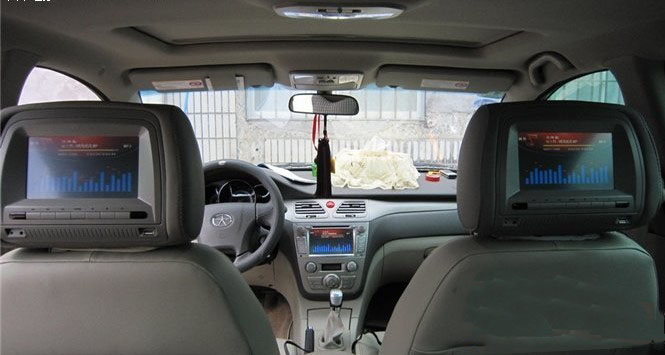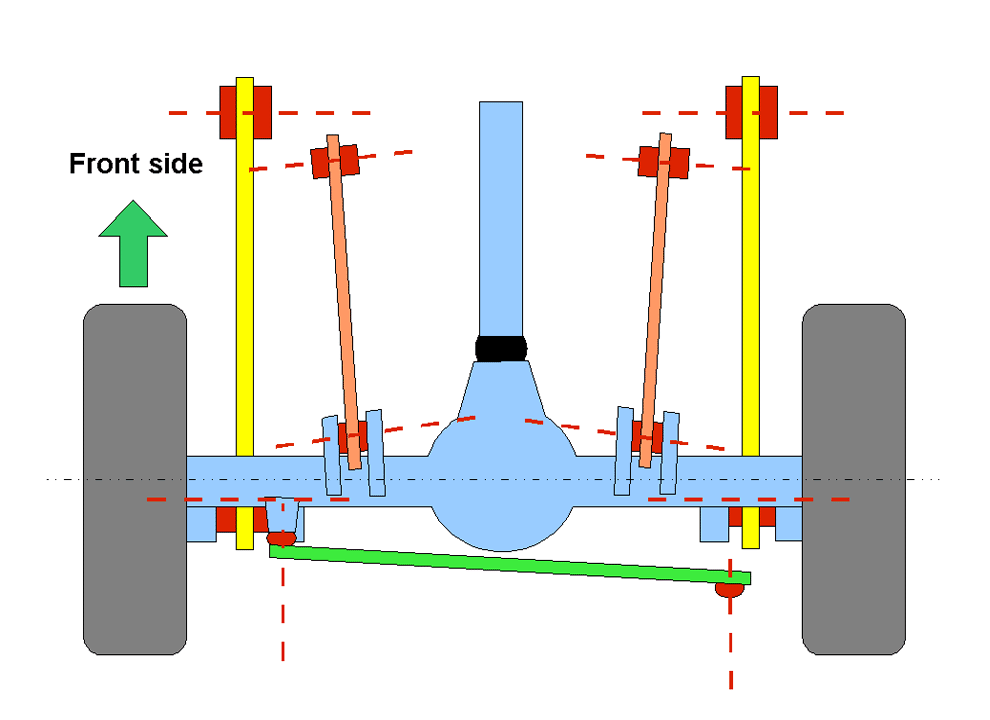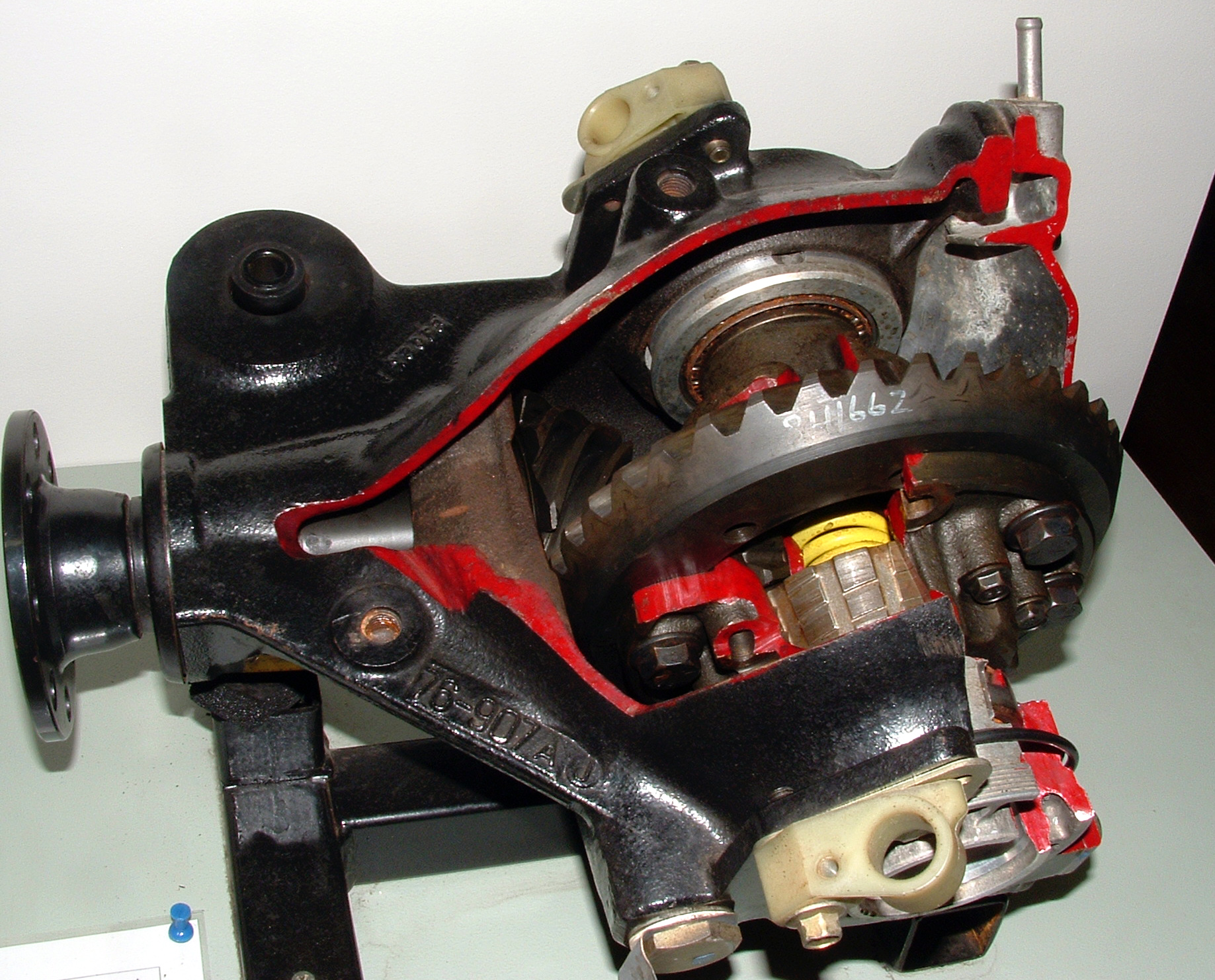|
Jetour Traveller
The Jetour Traveller (), also known as the Jetour T2 outside China, is a mid-size SUV manufactured by Jetour since 2023, going on sale in September 2023 in China. In April 2024, Jetour introduced its plug-in hybrid version called the Jetour Shanhai T2 (). Overview The Traveller was introduced in February 2023 in China. Pre-sales were opened in August 2023, and the price was announced in China the following month. The Traveller was designed under the guidance of former Porsche designer, Hakan Saracoglu. It is based on Jetour's Kunlun architecture. Designed with mild off-road capabilities, the Traveller has an approach angle of 28 degrees, a departure angle of 30 degrees, a ground clearance of , and a claimed wading depth of . It is equipped with a BorgWarner torque manager and electronic limited-slip differential, which allows the vehicle switch between different modes according to the conditions. The vehicle uses MacPherson struts for the front suspension and multi-link suspens ... [...More Info...] [...Related Items...] OR: [Wikipedia] [Google] [Baidu] |
Jetour
Jetour () is a brand launched in 2018 by Chery under Chery Commercial Vehicle. The Chinese name of the brand is pronounced "Jietu", best translated as "Victory Road". It is a budget brand of Chery for crossovers and SUVs. The entire Jetour product range would also be no smaller than midsize segments, with options for 5, 6, or 7-seat configurations, while offering Internal combustion engine, fully electric, plug-in hybrid and possibly hydrogen powertrains. History The Jetour brand was launched on January 22, 2018. During the brand launch, the original Jetour X70 crossover SUV was also introduced, riding on a new chassis called the iPeL, or intelligent platform of e-network and lightweight. Later in April during the 2018 Beijing Auto Show, Jetour introduced the Jetour X Electric Concept Car, which previewed the Jetour X90 crossover SUV. In April 2023, during the 2023 Manila International Auto Show, the Jetour brand was launched for the Philippine market. Products * Jetour Ice ... [...More Info...] [...Related Items...] OR: [Wikipedia] [Google] [Baidu] |
Approach Angle
Approach angle is the maximum angle of a ramp onto which a vehicle can climb from a horizontal plane without interference. It is defined as the angle between the ground and the line drawn between the front tire and the lowest-hanging part of the vehicle at the front overhang. Departure angle is its counterpart at the rear of the vehicle – the maximum ramp angle from which the car can descend without damage. Approach and departure angles are also referred to as ramp angles. Approach and departure angles are indicators of off-road ability of the vehicle: they indicate how steep obstacles, such as rocks or logs, the vehicle can negotiate according to its body shape alone. See also * Breakover angle * Overhang (automotive) * Ride height Ride height or ground clearance is the amount of space between the base of an automobile tire and the lowest point of the automobile (typically the axle); or, more properly, to the shortest distance between a flat, level surface, and the lowes ... [...More Info...] [...Related Items...] OR: [Wikipedia] [Google] [Baidu] |
Qualcomm Snapdragon
Snapdragon is a suite of system on a chip (SoC) semiconductor products for mobile devices designed and marketed by Qualcomm Technologies Inc. The Snapdragon's central processing unit (CPU) uses the ARM architecture. A single SoC may include multiple CPU cores, an Adreno graphics processing unit (GPU), a Snapdragon wireless modem, a Hexagon digital signal processor (DSP), a Qualcomm Spectra image signal processor (ISP) and other software and hardware to support a smartphone's global positioning system (GPS), camera, video, audio, gesture recognition and AI acceleration. As such, Qualcomm often refers to the Snapdragon as a "mobile platform" (e.g. Snapdragon 865 5G Mobile Platform). Snapdragon semiconductors are embedded in devices of various systems, including Android, Windows Phone and netbooks. They are also used in cars, wearable devices and other devices. In addition to the processors, the Snapdragon line includes modems, Wi-Fi chips and mobile charging products. The Sna ... [...More Info...] [...Related Items...] OR: [Wikipedia] [Google] [Baidu] |
In-car Entertainment
In-car entertainment (ICE), or in-vehicle infotainment (IVI), is a collection of hardware and software in automobiles that provides audio or video entertainment. In car entertainment originated with car audio systems that consisted of radios and cassette or CD players, and now includes automotive navigation systems, video players, USB and Bluetooth connectivity, carputers, in-car internet, and WiFi. Once controlled by simple dashboards knobs and dials, ICE systems can include steering wheel audio controls, handsfree voice control, touch-sensitive preset buttons, and even touch screens on higher-end units. Background Driven by the demand for more connected vehicles, in-car entertainment is getting more and more sophisticated. Car makers, electronics and software suppliers, as well as newcomers from the Silicon Valley (such as Google and Apple), work together and also compete to come up with infotainment systems that are user-friendly and safe to use. ICE systems are increasi ... [...More Info...] [...Related Items...] OR: [Wikipedia] [Google] [Baidu] |
Torque Converter
A torque converter is a type of fluid coupling that transfers rotating power from a prime mover, like an internal combustion engine, to a rotating driven load. In a vehicle with an automatic transmission, the torque converter connects the power source to the load. It is usually located between the engine's flexplate and the transmission. The equivalent location in a manual transmission would be the mechanical clutch. The main characteristic of a torque converter is its ability to increase torque when the output rotational speed is so low that it allows the fluid coming off the curved vanes of the turbine to be deflected off the stator while it is locked against its one-way clutch, thus providing the equivalent of a reduction gear. This is a feature beyond that of the simple fluid coupling, which can match rotational speed but does not multiply torque and thus reduces power. Hydraulic systems By far the most common form of torque converter in automobile transmissions is the hydr ... [...More Info...] [...Related Items...] OR: [Wikipedia] [Google] [Baidu] |
Four-wheel Drive
Four-wheel drive, also called 4×4 ("four by four") or 4WD, refers to a two-axled vehicle drivetrain capable of providing torque to all of its wheels simultaneously. It may be full-time or on-demand, and is typically linked via a transfer case providing an additional output drive shaft and, in many instances, additional gear ranges. A four-wheel drive vehicle with torque supplied to both axles is described as "all-wheel drive" (AWD). However, "four-wheel drive" typically refers to a set of specific components and functions, and intended off-road application, which generally complies with modern use of the terminology. Definitions Four-wheel-drive systems were developed in many different markets and used in many different vehicle platforms. There is no universally accepted set of terminology that describes the various architectures and functions. The terms used by various manufacturers often reflect marketing rather than engineering considerations or significant technical diff ... [...More Info...] [...Related Items...] OR: [Wikipedia] [Google] [Baidu] |
Dual Clutch Transmission
A dual-clutch transmission (DCT) (sometimes referred to as a twin-clutch transmission) is a type of multi-speed vehicle transmission system, that uses two separate clutches for odd and even gear sets. The design is often similar to two separate manual transmissions with their respective clutches contained within one housing, and working as one unit. In car and truck applications, the DCT functions as an automatic transmission, requiring no driver input to change gears. The first DCT to reach production was the ''Easidrive'' automatic transmission introduced on the 1961 Hillman Minx mid-size car. This was followed by various eastern European tractors through the 1970s (using manual operation via a single clutch pedal), then the Porsche 962 C racing car in 1985. The first DCT of the modern era was used in the 2003 Volkswagen Golf R32. Since the late 2000s, DCTs have become increasingly widespread, and have supplanted hydraulic automatic transmissions in various models of cars. ... [...More Info...] [...Related Items...] OR: [Wikipedia] [Google] [Baidu] |
Petrol Engine
A petrol engine (gasoline engine in American English) is an internal combustion engine designed to run on petrol (gasoline). Petrol engines can often be adapted to also run on fuels such as liquefied petroleum gas and ethanol blends (such as ''E10'' and ''E85''). Most petrol engines use spark ignition, unlike diesel engines which typically use compression ignition. Another key difference to diesel engines is that petrol engines typically have a lower compression ratio. Design Thermodynamic cycle Most petrol engines use either the four-stroke Otto cycle or the two-stroke cycle. Petrol engines have also been produced using the Miller cycle and Atkinson cycle. Layout Most petrol-powered piston engines are straight engines or V engines. However, flat engines, W engines and other layouts are sometimes used. Wankel engines are classified by the number of rotors used. Compression ratio Cooling Petrol engines are either air-cooled or water-cooled. Ignition Petrol e ... [...More Info...] [...Related Items...] OR: [Wikipedia] [Google] [Baidu] |
Turbocharged
In an internal combustion engine, a turbocharger (often called a turbo) is a forced induction device that is powered by the flow of exhaust gases. It uses this energy to compress the intake gas, forcing more air into the engine in order to produce more power for a given engine displacement, displacement. The current categorisation is that a turbocharger is powered by the kinetic energy of the exhaust gasses, whereas a supercharger is mechanically powered (usually by a belt from the engine's crankshaft). However, up until the mid-20th century, a turbocharger was called a "turbosupercharger" and was considered a type of supercharger. History Prior to the invention of the turbocharger, forced induction was only possible using mechanically-powered superchargers. Use of superchargers began in 1878, when sev ...[...More Info...] [...Related Items...] OR: [Wikipedia] [Google] [Baidu] |
Multi-link Suspension
A multi-link suspension is a type of vehicle suspension with one or more longitudinal arms. A wider definition can consider any independent suspensions having three control links or more multi-link suspensions. These arms do not have to be of equal length, and may be angled away from their "obvious" direction. It was first introduced in the late 1960s on the Mercedes-Benz C111 and later on their W201 and W124 series. Typically each arm has a spherical joint (ball joint) or rubber bushing at each end. Consequently, they react to loads along their own length, in tension and compression, but not in bending. Some multi-links do use a trailing arm, control arm or wishbone, which has two bushings at one end. On a front suspension one of the lateral arms is replaced by the tie-rod, which connects the rack or steering box to the wheel hub. The solid axle multi-link system is another variation of the same concept, and offers some advantages over independent multi-link, as it is sign ... [...More Info...] [...Related Items...] OR: [Wikipedia] [Google] [Baidu] |
MacPherson Struts
The MacPherson strut is a type of automotive suspension system that uses the top of a telescopic damper as the upper steering pivot. It is widely used in the front suspension of modern vehicles, and is named for American automotive engineer Earle S. MacPherson, who invented and developed the design. History Earle S. MacPherson was appointed the chief engineer of Chevrolet's Light Car project in 1945. He was tasked with developing a new, smaller car for the immediate post-war market, an effort that led to the Chevrolet Cadet. The Cadet was poised to be a groundbreaking vehicle, and the three prototypes that had been built by 1946 displayed a wide range of innovations. One of these was a revolutionary new independent suspension system that featured what is now known as MacPherson strut. The Cadet was slated to be the first production vehicle with MacPherson struts, but the project was cancelled in 1947 and never saw commercial production. This was in large part due to GM's conce ... [...More Info...] [...Related Items...] OR: [Wikipedia] [Google] [Baidu] |
Limited-slip Differential
A limited-slip differential (LSD) is a type of differential that allows its two output shafts to rotate at different speeds but limits the maximum difference between the two shafts. Limited-slip differentials are often known by the generic trademark Positraction, a brand name owned by General Motors. In an automobile, such limited-slip differentials are sometimes used in place of a standard differential, where they convey certain dynamic advantages, at the expense of greater complexity. Early history In 1932, Ferdinand Porsche designed a Grand Prix racing car for the Auto Union company. The high power of the design caused one of the rear wheels to experience excessive wheel spin at any speed up to . In 1935, Porsche commissioned the engineering firm ZF to design a limited-slip differential to improve performance. The ZF "sliding pins and cams" became available, and one example was the Type B-70 used during the Second World War in the military VWs ( Kübelwagen and Schwimmwa ... [...More Info...] [...Related Items...] OR: [Wikipedia] [Google] [Baidu] |







